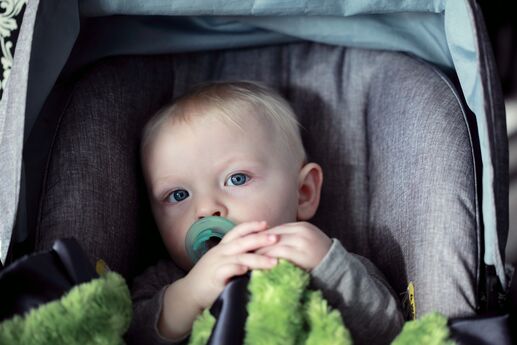Nine Ways to Keep Your Sleeping Baby Safe
Sudden infant death syndrome (SIDS) is scary to think about! It may even cause you to spend a lot of time hovering around your baby’s sleep environment during her first few weeks at home. While experts don’t know all the causes of SIDS, they do know that it’s rare -- and that there are plenty of things parents can do to reduce the risk of SIDS.
Here’s what you need to know.
1. Precaution starts during pregnancy. Give your baby a head start by getting proper prenatal care. It’s also essential to refrain from drinking alcohol, smoking or spending time in smoky environments.
2. Place your baby to sleep on her back. Whether it’s naptime or nighttime, babies under 1 year should always sleep on their backs to reduce the risk of SIDS. The exception: If she rolls onto her side or stomach, it’s OK to leave her like that. She probably has the ability to roll herself back.
3. Place your baby on a firm sleep surface. Your baby’s crib should meet current sleep safety standards (find out more at cpsc.gov) and her mattress should be covered with a fitted sheet.
4. No extras in the crib. That means no stuffed animals, loose bedding, pillows, crib bumpers, quilts, comforters or any other objects that could potentially suffocate your baby while she sleeps.
5. Sleep near your baby. Keep her crib or bassinet within arm’s reach. But don’t let her sleep in your bed, which can actually increase the risk of SIDS.
6. Breastfeed and immunize. Doing both can reduce the risk of SIDS, according to research.
7. Keep your baby cool. Signs your baby might be too hot include sweating or a hot chest or forehead. As a rule of thumb, you only need to dress her in one more layer than you would wear to keep warm.
8. Offer a pacifier. Pacifiers given during sleep or naptime may reduce the risk of SIDS. But if your baby isn’t interested, that’s okay -- you don’t have to force it.
9. Avoid SIDS-reducing products. Despite what the package’s label might say, wedges, special mattresses and sleep positioners have not been shown to reduce the risk of SIDS. In fact, they could cause suffocation.
Photo by Sharon McCutcheon on Unsplash





